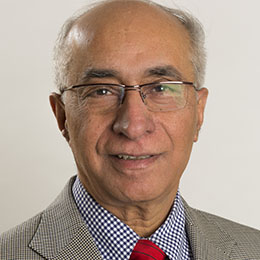Dr. Robert James (RJ) Cusimano, a cardiac surgeon at the Peter Munk Cardiac Centre (PMCC) and an Associate Professor in the Department of Surgery at the University of Toronto, is leading the inaugural international cardiac tumour conference in January. (Video: PMCC)
When he reflects on the first time he witnessed and had to treat a cardiac tumour, Dr. Robert James (RJ) Cusimano rifles through his memory bank.
"It was a long time ago," he says, estimating that time frame to be well over 20 years. "It has been an evolution in cardiac surgery."
Considered a "rare" medical occurrence, these abnormal growths either develop in the heart or heart valves (primary tumour), or spread to the heart from another part of the body (secondary tumour), already afflicted with cancer.
While most cardiac tumours are benign, they can prove to be challenging to treat depending on their size and position in the heart.
Related to this story
'COULD BE DONE BETTER'
A cardiac surgeon's technical ability to remove a tumour within the complex confines of the heart along with their planned approach to that removal – taking into consideration the growth's dimension and location – are both particular skill sets honed largely through experience.
"I thought it would be good to bring experts from around the world to Toronto to talk about this very very rare topic that really has never been discussed, in an organized way in the world before," Dr. Cusimano says of the idea behind the conference.
(Photo: PMCC)
"We've been fortunate to have people send us patients with cardiac tumours because we are such a highly-specialized care centre," says Dr. Cusimano, a cardiac surgeon at Peter Munk Cardiac Centre and Associate Professor of Surgery at the University of Toronto. "And I've just realized that tumours, when done elsewhere, could be done better."
With a view to sharing knowledge and better understanding the role of multi-disciplinary medical and surgical teams involved in the care of patients with cardiac tumours, Dr. Cusimano is leading the first
Toronto Cardiac Tumour Conference, which will take place on Jan. 21.
"Many of these lesions will not have a definite pre-operative diagnosis," says
Dr. Crean, a Cardiologist/Radiologist at Peter Munk Cardiac Centre, who estimates he has seen more than 100 cardiac tumours or lesions over the course of his 20-year career.
"We have a number of advanced non-invasive imaging methods we can apply to try and establish whether the lesion is benign or malignant," says Dr. Crean, a presenter at the upcoming conference. "Focused expertise is very important but despite this the diagnosis can be extremely challenging."

Dr. Jagdish Butany, a UHN Cardiovascular Pathologist, says he's seen an increase in the number of cardiac tumours at his practice, especially in the past three to five years. (Photo: PMCC)
MULTI DISCIPLINARY TEAM LEARNING
"With really rare conditions, it's important to send them to somebody who has a lot of experience,"
Dr. Cusimano. "I thought that perhaps we should get the area of cardiac tumours more specialized.
"I'd like to bring people in the different parts of the hospital that deal with cardiac tumours together."
UHN Cardiovascular Pathologist, Dr. Jagdish Butany, estimates he's sees between 20 and 30 cardiac tumours a year.
"Certainly they have increased in my practice, especially in the last three to five years," he says. "Whether due to an actual rise in incidence, or improved diagnostics here at UHN and greater surgical skill in their excision, I do not know. It's likely a combination of factors."
Dr. Butany says he is most looking forward to sharing insights into "the wide spectrum of lesions that can occur and some new findings from UHN from the last two years."
